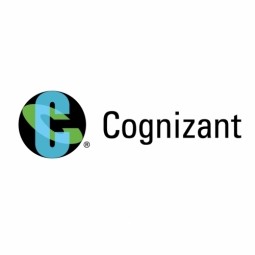Download PDF
UX Team Accelerates Product Development for Digital Payments Provider

Applicable Functions
- Product Research & Development
Use Cases
- Machine to Machine Payments
- Time Sensitive Networking
Services
- Hardware Design & Engineering Services
The Challenge
A global digital payments provider was looking to consolidate its design group in California, aiming to create a central hub for the company’s product, engineering, and design talent. The goal was to accelerate product development by providing strategic and flexible user experience (UX) design services, ensuring consistency and continuity of project resources. The company also aimed to establish last-mile design support to global product design and engineering teams and create governance for efficient coordination across projects. The major challenge was to staff the new hub with 35 UX design consultants and make it operational within 30 days. The client chose Cognizant Digital Experience, one of the largest design services groups in the industry, to take on this challenge.
The Customer
Not disclosed
About The Customer
The customer is a global digital payments provider that wanted to consolidate its design group in California. The company aimed to create a central hub for its product, engineering, and design talent to accelerate product development. They sought to provide strategic and flexible user experience (UX) design services, ensuring consistency and continuity of project resources. The company also wanted to establish last-mile design support to global product design and engineering teams and create governance for efficient coordination across projects.
The Solution
Cognizant Digital Experience began by training UX designers in the ideation and research that’s central to product companies. They standardized the digital payments provider’s processes to ensure effective collaboration among its consolidated teams. Despite the company's desire to capitalize on the benefits of reusable user interface (UI) components, the team lacked the dedicated staff required to keep files updated and ensure a living toolkit housed the standardized UI components. To address this, Cognizant established an environment for the free flow of ideas, holding sync-up meetings and prioritizing team collaboration. Each UI component was assigned a code that helped the product design team design and scale faster. Procedure standardization facilitated further knowledge sharing among team members.
Operational Impact
Quantitative Benefit
Related Case Studies.

Case Study
Centralizing Data for Improved Efficiency: A Case Study on Malvern Panalytical
Malvern Panalytical, a UK-based hi-tech electronics company, was grappling with the challenge of decentralized data storage. The company had a vast amount of unstructured data scattered across various platforms, from hard drives to emails and floppy disks. This made the data searching process extremely cumbersome and inefficient. The company's rapid growth, from 200 to over 1,000 employees in a decade, and expansion across three continents further exacerbated the need for a more structured and centralized data system. As a company involved in electronics manufacturing and software development, it was crucial for Malvern Panalytical to find a platform that could structure all their data, track all modifications of documents in real time, and provide clear visibility of the internal information flow across all its facilities.

Case Study
Creating an Agile Environment to Drive Growth in the IoT
Numerex needed to provide innovative products and service offerings and adapt to the explosive growth in the IoT/M2M ecosystem. As Numerex was transforming into delivering on-demand offerings to its wide range of markets, they realized their back office systems weren’t capable of providing flexible feature sets, critical to helping turn up new product catalogue configurations to close deals and better manage service offerings. An example of this needed flexibility would allow a Numerex customer to buy devices in bulk yet only pay for those that actively use data on the network. Their systems required significant development efforts to introduce new service offerings such as this. They had segregated billing systems that didn’t scale for high volume processing requirements. Numerex was also growing via M&As, which brought the additional challenges of outdated technologies and a variety of disparate billing systems that didn’t talk to each other, resulting in complex operational expenditures and integration requirements. It became so dire that Numerex was forced to implement manual billing processes for certain lines of business.

Case Study
Managed Hosting Platform
Formula 1® is a sport where every millisecond matters. With changing preferences and the growth of the digital medium, many fans choose to experience the sport through the F1.com website. The website needs to deliver a superior experience to tens of millions of fans across the world consistently. Hence, it is imperative to have a robust platform that can deliver the required performance and scale with growing trac and dynamic fan expectations. Some of the key challenges are: • Every race weekend, Formula1.com attracts up to 7 million fans. Managing this huge surge in website traffic, requires a scalable hosting platform that can simultaneously allow millions of fans to experience the excitement of the sport seamlessly. • Fans across the globe expect an engaging and immersive experience through enriched and enhanced race content across multiple devices. To meet this requirement Formula1.com needs to have a robust platform that is able to deliver real-time updates and information across screens, be it tablets, TVs or smartphones. • A global brand like Formula 1® needs to ensure it delivers a consistent user experience across all platforms across the globe. This consistent delivery of enriched content cannot be compromised through downtime or any other issue at any point. • In an age where threats to global websites are prevalent, Formula 1® needed a platform that was ready to meet any challenge to its website. They needed a solution that delivers consistency, scalability and yet at the same time is continuously monitored, secure and reliable.

Case Study
The Hub of Cloud Communications
SimpleSignal delivers services through multiple channels, whether that’s through wholesale partners or white labeling or directly to an end user. It’s a wide range of products - large scope - and offered both as usage based and subscription based services. The platform of choice had to have the qualities of traditional telecommunications billing but also the innovation, flexibility and scalability of Software-as-a-Service (SaaS) billing.







